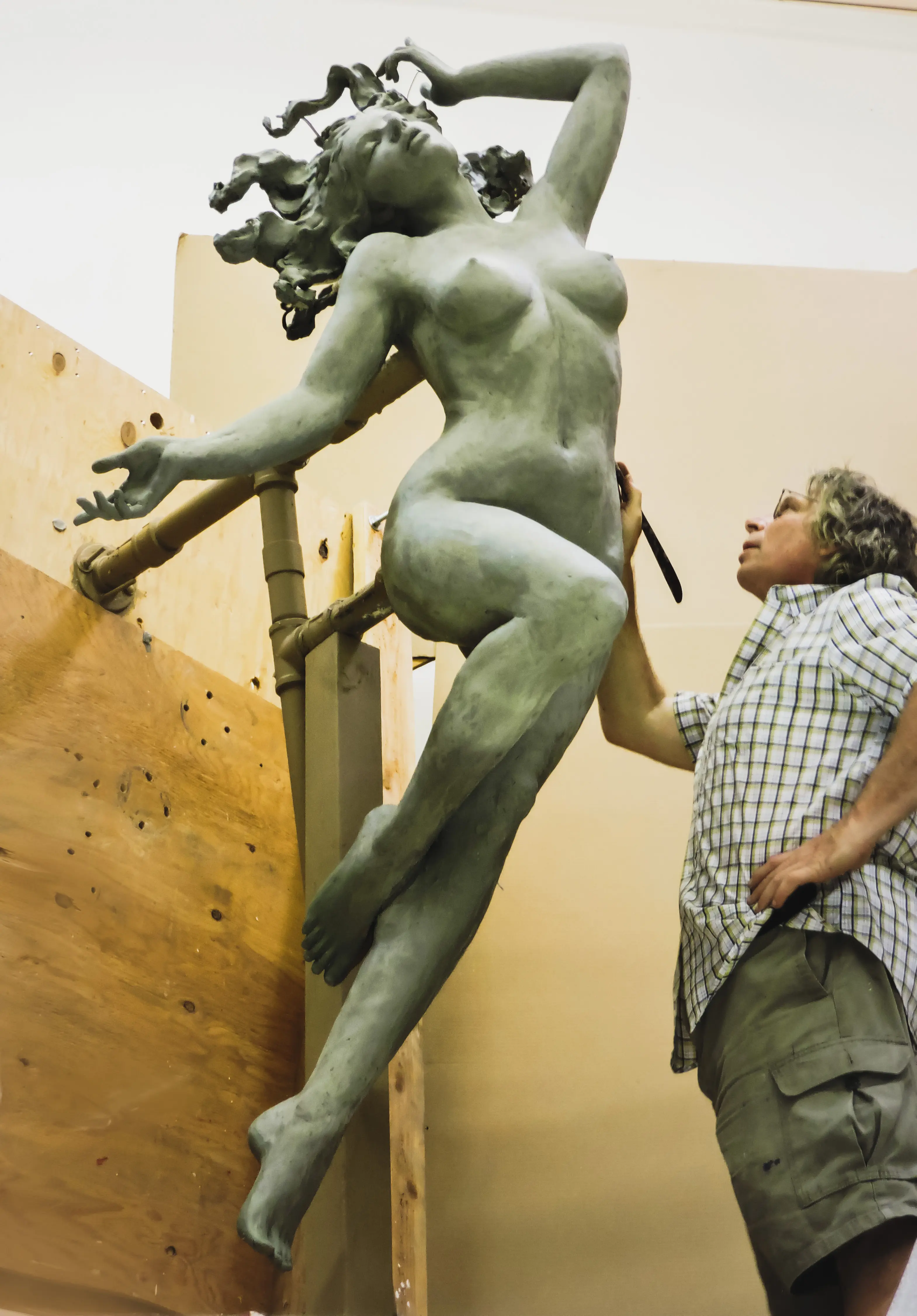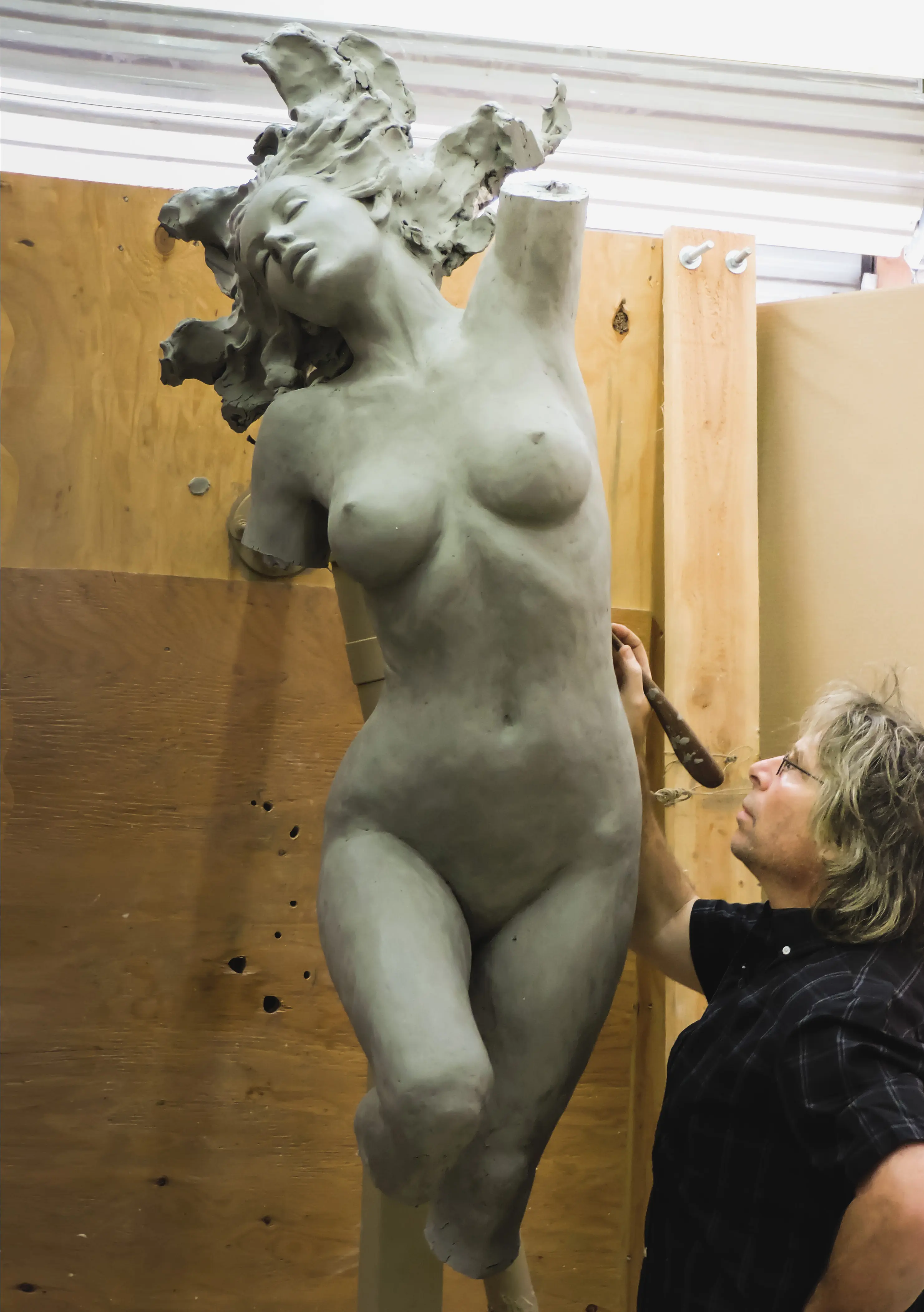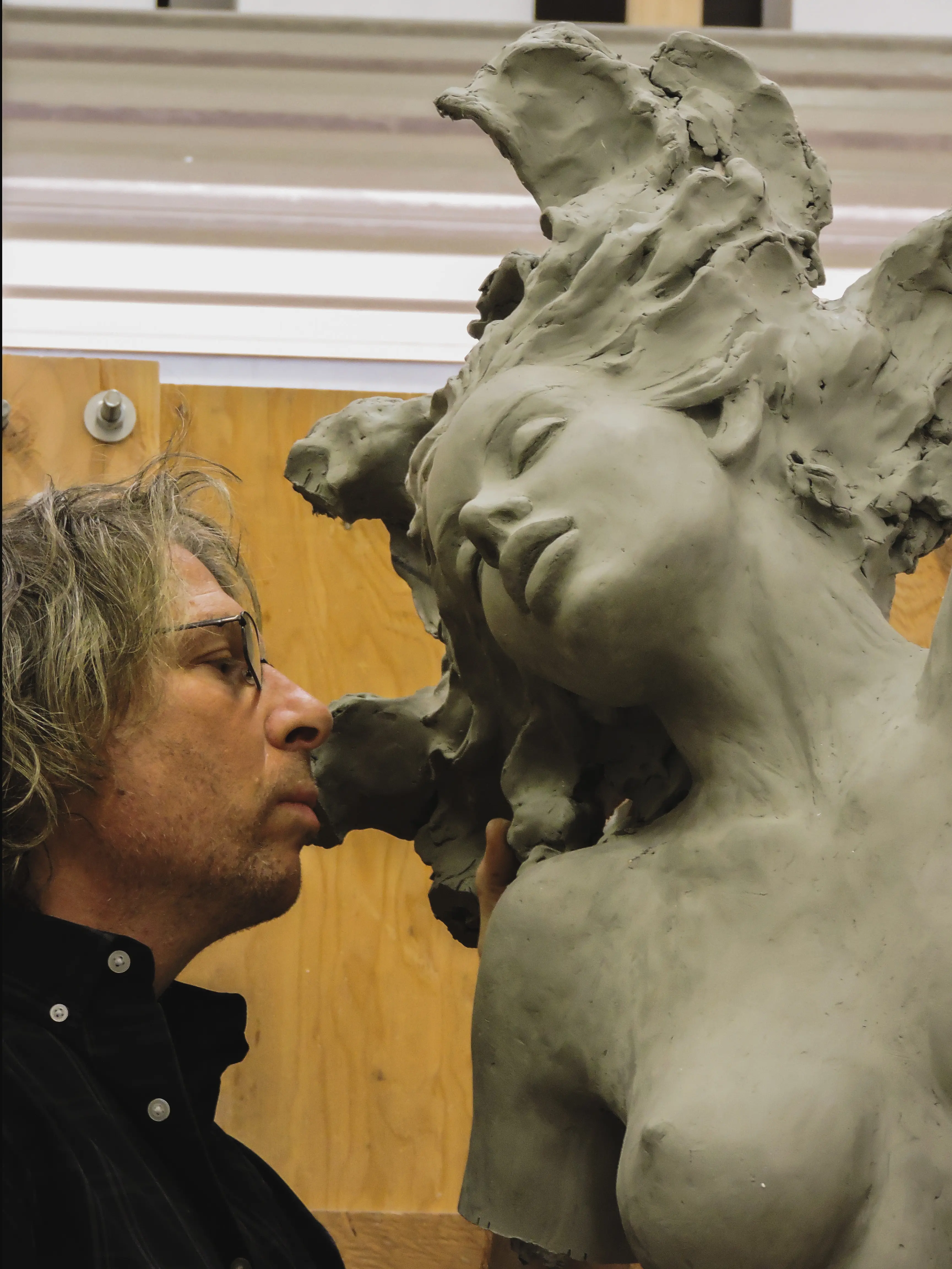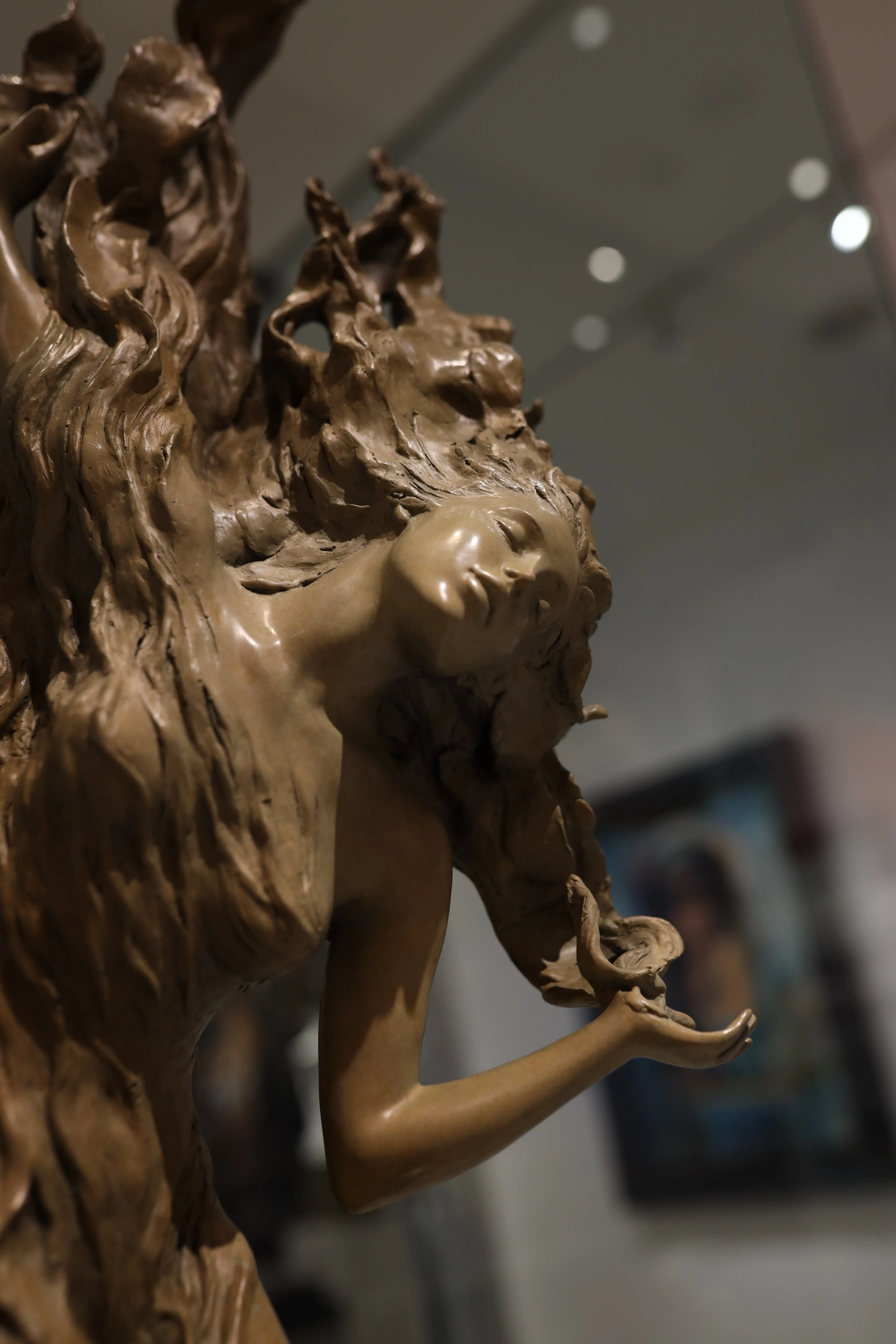
Written by Joseph Lawrence
Photographs by Fabian Lopez
In the art world it is often said that the truly great ones are born great, the aptitude for artistic creation being innate, the realization of artistic stardom being predestined. If this is true then acclaimed sculptor Ira Reines has followed the template to a tee.
The wunderkind Ira Reines exhibited a knack for sculpting at a very young age, something not lost on his parents as they marveled at his abilities which were beyond his years. This early realization of prodigy closely mirrored the early years of the Renaissance sculptor, Bernini, who was one of the artists highly admired by Reines. In Bernini’s case, it was not only his parents but the Pope himself who saw the brilliance in the young artist, coveting him as a future addition to the church’s stable of artisans meant to inspire the faithful and consolidate church power throughput Europe.
Ira Reines would examine in depth the work of Bernini as well as Michelangelo and other Renaissance masters when at age twenty, he made a pilgrimage to Italy to dwell among past like-minded talents. It was also around this period that Reines was offered his first job, sculpting medallions for a Connecticut based company at the behest of its Director who had been impressed with the young Reines’ sculptures.

Back in the 1920’s, two revolutionary new art forms were coming into prominence. Surrealism was the new avant-garde sensation in Europe and in America a new decorative art and design style known as Art Deco was defining the “Roaring Twenties.” The latter style was essentially the brain child of one man, the genius Erte, often called the “Father of Art Deco.”
Erte fashioned a career out of his popular design sensibility, applying his style to set design, jewelry and graphic art. But Erte also wanted to see his design vision manifested in sculpture. Unfortunately Erte lacked the skills necessary to bring this vision to fruition. Thus began a journey for the great visionary to find a master sculptor capable of bringing his popular artistry to the three dimensional medium. After an exhaustive vetting process, the young award-winning virtuoso Ira Reines was selected to be the sole collaborator in a partnership that would last until Erte’s death eleven years later.
These collaborative sculptural works became an international sensation, sought after and coveted by major museums and Hollywood royalty alike. The very first formal unveiling by the star tandem was at the French Embassy in New York. From that introduction the works would eventually become part of the permanent collections of some of the world’s most notable museums including The Metropolitan Museum of Art in New York, The Smithsonian, and London’s Victoria and Albert. While they were available on the open market, the sculptural masterpieces were quickly snatched up by the likes of Barbara Streisand, Johnny Carson, Elizabeth Taylor and Sir Elton John. At one New York gallery unveiling an enthusiastic and excited photographer seemed particularly smitten with these treasures in bronze. That man was none other than pop icon Andy Warhol.
Erte’s passing in 1990 freed Reines to pursue a stylistic evolution unencumbered by oversight. Reines had become contemplative of life’s deeper meanings, rebirth, renewal, evolution and ascension. His personal artistic style was now evolving, reflective of the philosophical tenets that the more mature artist pondered. This transformative period crescendoed when a personal tragedy befell the artist. Within a period of a few months both of Reines’ parents died. The sculptor found himself feeling lost and alone. Ira Reines channelled his grief through his work, further refining his technique and ascribing to his work the symbolism that spoke to his deeper interpretations of the human experience. Reines would coin his new style “Sculptural Etherealism.”
Thus a new chapter was at hand for Ira Reines. The technical brilliance Reines’ work was known for was made further compelling by the addition of proprietary patinas, giving his bronze sculptures the look of polished stone. Reines started to fuse his alluring figures with abstract metal pieces randomly created when molten metal from a white-hot crucible was allowed to splash and harden across a concrete floor. Reines had also taken his artistic process into a monumental phase. He had mastered sculpting on a grand scale and larger than life pieces were being created on a commissioned basis for both private collectors as well as public installations. Among some of Reines most noteworthy installations are the breathtaking “Neptune” bronze permanently displayed on the grounds of The Society of the Four Arts in West Palm Beach, Florida and the bronze “Aurora” permanently exhibited on the grounds of Gardner-Webb University in North Carolina.

Who Are You?

I Am No Stranger to the Strange

La Choise
In the early 2000’s, Reines signed on with one of America’s foremost art publishing companies, Masterpiece Publishing in Orange County, California. And with the signing also began a collaborative relationship with Reines’ friend and mentor, artist Sir Daniel Winn. Together the two gold medal winning sculptors refined the sculptural and metallurgical process, and collaborated on large scale works while at the same time also pursing their separate stylistic endeavors. The work of Ira Reines continues to bedazzle and engender desire for ownership among collectors worldwide. The one time child prodigy has now reached the pinnacle of a storied career that has spanned decades and transitioned centuries. And perhaps, just perhaps, the best is yet to come. -